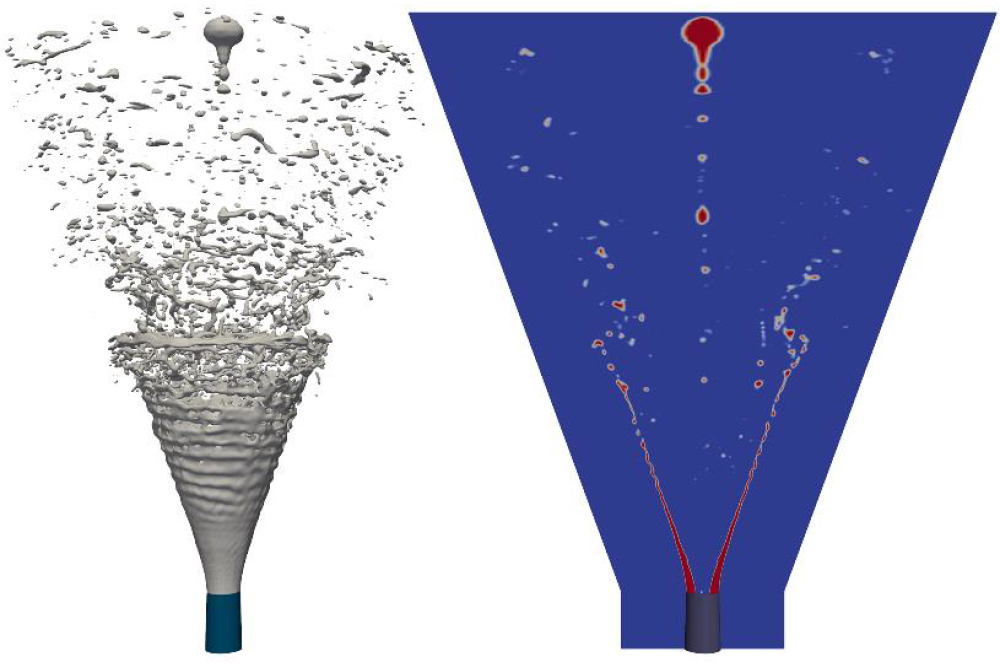Evaluation and Development of OpenFOAM Library for SCR Exhaust Gas Aftertreatment System
Introduction
The automotive diesel engine industry has to face the increasingly stringent emission. Since the incylinder combustion process optimization does not alone suffice to meet these requirements, the implication of exhaust gas after-treatment techniques is prevailing as complementary means to sustain further harmful emissions abatements. In this respect, the selective catalytic reduction (SCR), based on a urea-water solution (UWS) is emerging as the most promising method for NOx reduction with an efficiency could be even over 95%. However, this performance strongly depends on how the ammonia is uniformly distributed at the inlet front of the catalyst. Further, the downsizing trend triggering shorter dimensions to the SCR exhaust system will increase the UWS interaction with the exhaust system walls which may cause production of undesirable byproducts of biuret, cyanuric acid and melamine, among others. In addition, the liquid wall film formation may increase the backpressure significantly, impede the engine operating conditions and increase fuel consumption. Thus, a well suited SCR system can not only supplement the engine internal NOx reduction but will also be the enabler of savings in fuel consumption.
Methods
To support a deeper understanding, the development and the optimization of such a liquid injection-based system, multiphase CFD (computational fluid dynamics) techniques are being continuously applied. Dealing with liquid injection-based system in which multiphase transport processes are usually associated with irreversibilities, a Large Eddy Simulation (LES) framework instead of RANS (Reynolds Averaged Navier-Stokes) methods will be adopted for its proven capability to capture better unsteady large scale flow phenomena while modelling only a small part of unresolved subgrid scale structures. In the present study, the numerical modelling and simulations are carried with the open-source C++ library OpenFOAM v2012 for pressure-swirl AdBlue using LES based Volume of Fluid (VOF) method. Thereby, the classical continuous surface tracking based on VOF method adopted to simulate the surface disintegration and spray evolution process during the AdBlue injection.
Results
In this work, an LES based numerical investigation is carried out for AdBlue pressure-swirl injector using the adaptive mesh refinement. Even with the pressure swirl injector, the initial stage of spray evolution features larger droplets and long connected ligament leading to inferior atomization. The spray structure and the particle size distribution along with the number-based probability density function (pdf) of Lagrangian particles are numerically analysed. The compared droplet size distribution highlights the importance of fine mesh to resolve the smaller droplets. Figure 1 presents the atomization due to formation and breakup of hollow-cone liquid-jet into ligaments and subsequent droplets. It turns out that, the liquid mass retained in nozzle orifice from previous injection and gradual development of flow-swirl leads to formation of bigger droplet and connected ligament at early injection stage. This can contribute to the accumulation of liquid film and formation of solid deposit in the SCR duct. The compared droplet size distribution also highlights the importance of fine mesh to resolve the smaller droplets.
Discussion
There are many studies reported that are based on purely by the Lagrangian particle tracking (LPT) approach for gasoline direct injection (GDI) while for AdBlue injection and resultant spray dynamics in LES framework. In particular for AdBlue injection, a hybrid RANS-LES approach is adopted to investigate the evaporation and mixing at very high pressure (150 bar) in opposing gas flow configuration, while LES carried out for a generic SCR configuration with real operating conditions (gas properties, AdBlue injection) to carry detailed investigation of spray dynamics and spray-wall impingement with AdBlue film buildup. However, there are still lack of reliable numerical studies to investigate the pressure-swirl AdBlue injection and relevant spray dynamics, the present study identifies the potential framework to carry out detailed numerical investigation that can be helpful to develop and support the LPT based model development.




